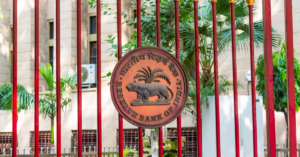
In November, we reached out to marketers to learn how they would spend a $25,000 budget in Q1 2022. The advice ranged from going full force on one channel to investing in a copywriter and making video content.
But there’s been a lot of belt tightening since then. We followed up with a few marketers from our previous survey and reached out some more to see how they would spend a $75,000 budget in summer 2022. Amid the economic uncertainty, we also asked how their plan would change if their budget was $10,000.
“For a $75,000 allocation of a budget like this, we’d really focus our efforts on digital performance-based media,” said Ellen Kim, VP of creative at MarketerHire. “We are always iterating on new creative versions and reviewing digital channel spend to ensure that we’re being as efficient as possible.”
Here’s who we talked to:
Ellen Kim, VP of Creative, MarketerHire
Imagine you have a $75,000 budget going into summer 2022. How would you spend it with the current uncertain state of the economy to accelerate a B2C startup? A B2B startup?
With knowledge gleaned from experience at a B2B startup — coupled with the uncertain state of the current economy — we have developed an acute understanding of just how crucial it is to constantly monitor advertising results as a barometer for growth. For a $75,000 allocation of a budget like this, we’d really focus our efforts on digital performance-based media.
We are always iterating on new creative versions and reviewing digital-channel spend to ensure that we’re being as efficient as possible. This has proven successful across digital channels — using iterations not only as a down-funnel tactic, but also to get our message across as a viable growth tool, creating an entire freelance marketing team for startups who are trying to achieve growth quickly and easily.
If you only had $10,000, how would your recommendations change?
With a smaller budget, we’d work to focus on the best-performing search to meet our customers when they are actually interested — it’s easier to capture high-intent, low-funnel traffic since you have the intent signal from the search itself. Social can work well as a DR channel (and does for us) but is less certain than search.
Another way of maximizing a smaller budget is to consider playing where our competitors are not in order to identify new customer types. This hypertargeted approach allows for extreme precision in both messaging and placement to be as successful as possible for this customer.
Are your clients expecting faster ROI than in 2021? How is that impacting where you allocate performance spend?
Everyone wants ROI. To ensure that we are managing expectations — all while meeting demands — we are conducting deeper dives on prospective customers and asking ourselves the important questions. We’re considering which customers are more likely to have a long-term approach to ROI — rather, those that we need to continue to nurture — versus who can be an immediate customer on the fast track to returns.
From there, we must take into account what that brand needs for immediate growth, which in turn creates positive results for all — the marketer, our company and the client. The heightened demand for ROI is definitely more prevalent in some sectors than others.
In terms of impacting where we allocate performance spend, we still see considerable demand for less revenue-driving roles, and, as a result, our performance spend allocation has not changed meaningfully. However, it’s more important than ever that we understand the client’s goals during onboarding and set them up with the right marketers to achieve those goals.









